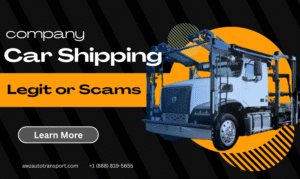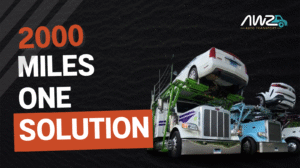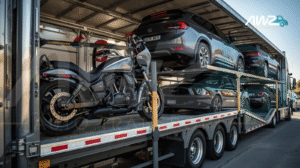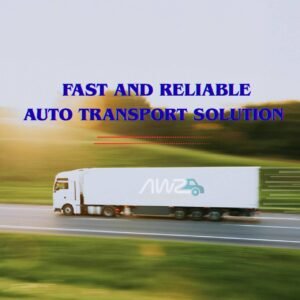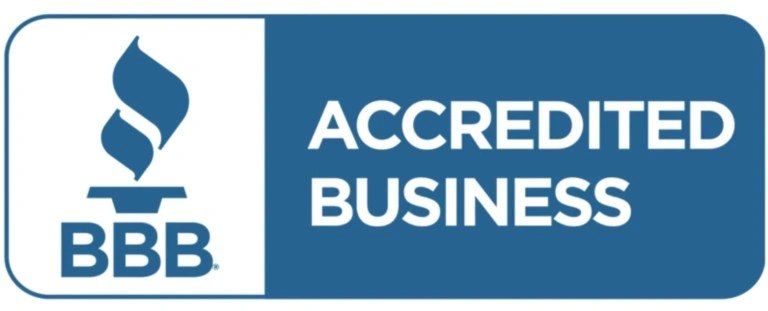What is the Most Inexpensive Way to Transport a Car?
Terminal-to-terminal auto transport is the most inexpensive way to ship a car across the states. A train is another affordable option, but it comes with a lot of risks. A little planning beforehand can save you a lot of money. So, prefer planning in advance from the time you actually want to ship your car. Summers are more expensive than winters and expedited transport also increases the cost. Choose an auto transport company for a cost-effective solution and discuss with the broker to reveal what saves you the most.
Get a quote from the best auto transport company. providing the most inexpensive auto transport service from one state to another.
Explore the Cost-Effective Ways to Ship Your Car
Some of the well-known strategies to save on your car transport include choosing the right service type, avoiding extra expenses, and scheduling the pickup in advance.
Shorter Routes (Under 500 Miles)
Self-Drive Transport
Driving your car is the most cost-effective strategy for shorter distances. It is a practical option for distances under 300 miles when factoring in fuel, time, and vehicle depreciation. Drive your car yourself if you are moving across nearby states and are not short on time.
- Best For: Weekend moves, nearby purchases, flexible schedules.
- Considerations: Factor in fuel costs, lodging if overnight required, and potential wear and tear.
- Key Benefits: Complete control over timeline, direct route, no handling by third parties.
- Timeline: Immediate, based on your schedule.
Professional Driveaway Service
Licensed drivers transport your vehicle door-to-door by driving it to the destination. Companies like AWZ Auto Transport maintain bonded, insured driver networks specifically for this service. Your vehicle gains mileage but avoids loading/unloading risks. Particularly effective for shorter distances where trailer transport setup costs become disproportionate.
- Best For: Operable vehicles, quick delivery needs, distances under 800 miles.
- Considerations: Vehicle gains mileage, requires an operational vehicle, and driver availability.
- Key Benefits: Direct route, minimal handling, faster than multi-car carriers
- Timeline:1-3 business days, depending on distance.


Single-Car Enclosed Transport
Specialized haulers are designed for individual vehicle transport. This enclosed transport costs a bit high but is manageable for luxury vehicles, SUVs, and heavy-duty trailers.
- Best For: Luxury vehicles and cars when extra protection is required
- Considerations: Higher cost per mile and limited carrier availability
- Key Benefits: Fully enclosed protection from road debris
- Timeline: 2-5 business days, depending on route.
Longer Routes (500+ Miles)
Open Multi-Car Transport
This cheapest shipping method ships your car using 6-10 car haulers on major shipping corridors. It is most cost-effective for standard passenger vehicles over long distances. It utilizes established carrier networks and optimized routing systems that professional transport companies coordinate.
- Best For: Standard vehicles, budget-conscious shipping, flexible timeframes.
- Considerations: Weather exposure, shared transport schedule, potential delays.
- Key Benefits: Most economical option, established carrier networks, proven reliability.
- Timeline: 5-10 business days, depending on route.
Rail Transport Networks
The service is limited to specific routes but is highly efficient where available. Amtrak Auto Train serves the Washington, DC, to Orlando exclusively for individual customers. Commercial rail networks through CSX and Union Pacific handle dealership and fleet transport, but aren’t accessible to individual consumers.
- Best For: Specific routes where available, environmentally conscious transport.
- Considerations: Limited route availability, requires coordination with rail schedules.
- Key Benefits: Weather protection, reduced road wear, eco-friendly option.
- Timeline: Fixed schedule based on rail departure times.
Enclosed Multi-Car Transport
It has a a capacity of 4- 6 vehicles and full weather protection. The service is reserved for luxury, classic, and exotic vehicles where protection justifies the premium. This car shipping requires specialized equipment and experienced operators familiar with handling high-value vehicles.
- Best For: High-value vehicles, classic cars, luxury automobiles.
- Considerations: Premium pricing, limited carrier availability, and longer booking lead times.
- Key Benefits: Complete weather shielding, enhanced security, careful handling protocols.
- Timeline: 7-14 business days, depending on route and availability.
International Shipping Methods
Container shipping for overseas transport via major ports includes RoRo (Roll-on/Roll-off) services and standard container shipping. It requires extensive documentation and customs coordination that best auto transport companies handle through established port partnerships.
RoRo Services
A drive-on/drive-off shipping method involves driving vehicles onto the vessel and securing them for transport. This method is more economical than container shipping but offers less protection from weather and handling during the journey.
- Best For: Standard vehicles, international shipping, cost-conscious overseas transport.
- Considerations: Limited protection from elements, port facility requirements, and customs documentation.
- Key Benefits: Drive-on/drive-off method, more economical for standard vehicles.
- Timeline: 2-6 weeks, depending on destination and sailing schedule.
Container Shipping
Vehicles are loaded into secure shipping containers for maximum protection during overseas transport. Higher cost but provides complete protection and can accommodate multiple vehicles or additional items.
- Best For: High-value vehicles, multiple vehicle shipping, maximum protection overseas.
- Considerations: Higher cost than RoRo, container size limitations, port accessibility.
- Key Benefits: Maximum protection, suitable for high-value or multiple vehicles.
How to Save on Transport Costs
Some of the tips to save an additional amount on your shipping include:
Terminal-to-Terminal Pickup
Skip the door-to-door premium and drive to shipping terminals instead. Most major cities have car transport hubs where you can drop off and pick up your vehicle directly.
How it works: Transport companies maintain partnerships with terminal facilities in urban areas. You bring your car to the terminal for pickup and collect it from the destination terminal when it arrives. This cuts out residential delivery fees and access complications that drive up costs.
Advanced Booking Discounts
Book your car transport 2-4 weeks ahead of your move date. Carriers reward early bookings with lower rates because it helps them plan efficient routes.
Why timing matters: Transport companies can fill their trucks more strategically when they know about shipments in advance. February offers the lowest rates of the year, while summer months cost significantly more due to high demand from relocations.
Multi-Hauler Transport
Choose open transport on multi-car haulers instead of single-vehicle trailers. These large trucks carry 6-10 vehicles at once, splitting fuel and driver costs among multiple customers.
Best for families and dealers: If you’re shipping multiple vehicles, ask about fleet discounts. Even single-car customers save money on multi-hauler trucks compared to dedicated transport. Reputable companies provide full insurance coverage for peace of mind.
Reducing Vehicle Weight
Empty your car completely before shipping. Extra weight costs money, and personal items aren’t covered by transport insurance anyway.
What to remove: Take out spare tires, tools, floor mats, and anything loose in the trunk or cabin. Keep only essential fluids and a quarter tank of gas. Some companies charge weight fees for heavily loaded vehicles.
Highway Meeting Points
Meet carriers at truck stops or highway locations instead of your home address. Rural or hard-to-reach addresses often carry surcharges that highway pickups eliminate.
Coordination required: You’ll need to coordinate timing with the driver and travel to the meeting spot. Popular truck stops along major highways work best. This saves on residential delivery fees and access complications.
Flexible Delivery Windows
Give carriers a 3-5 day pickup and delivery window instead of demanding exact dates. Flexible customers get better rates because they help drivers optimize their routes.
Trade-offs to consider: Less control over precise timing, but you’ll often get faster actual delivery when carriers can group your shipment with others heading the same direction. Urgency fees disappear when you’re not rushing the timeline.
Conclusion
Open transport is the most cost-effective method for car shipping. You can make it even more affordable by using terminal-to-terminal pickup and scheduling your quote well in advance. Get multiple quotes from the industry-leading auto transport companies and compare the prices. Prepare your vehicle by reducing the fuel level and removing personal belongings, as this reduces the extra weight.

